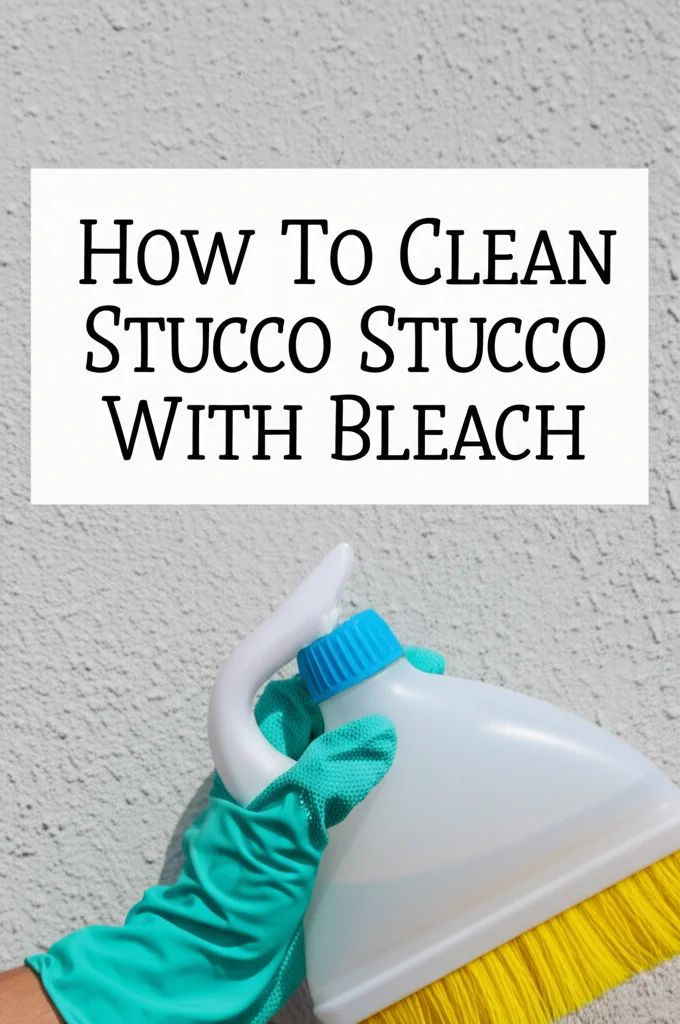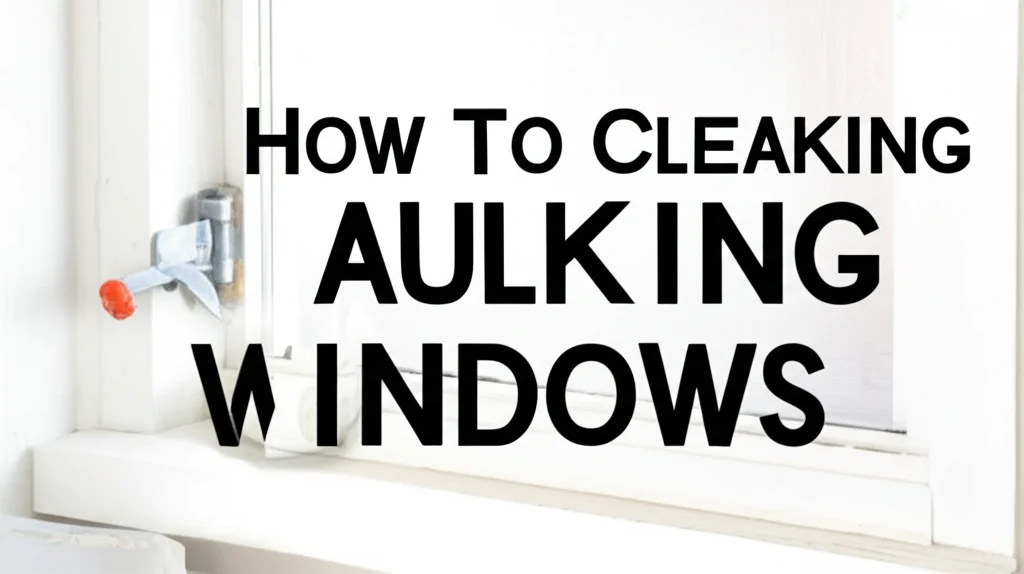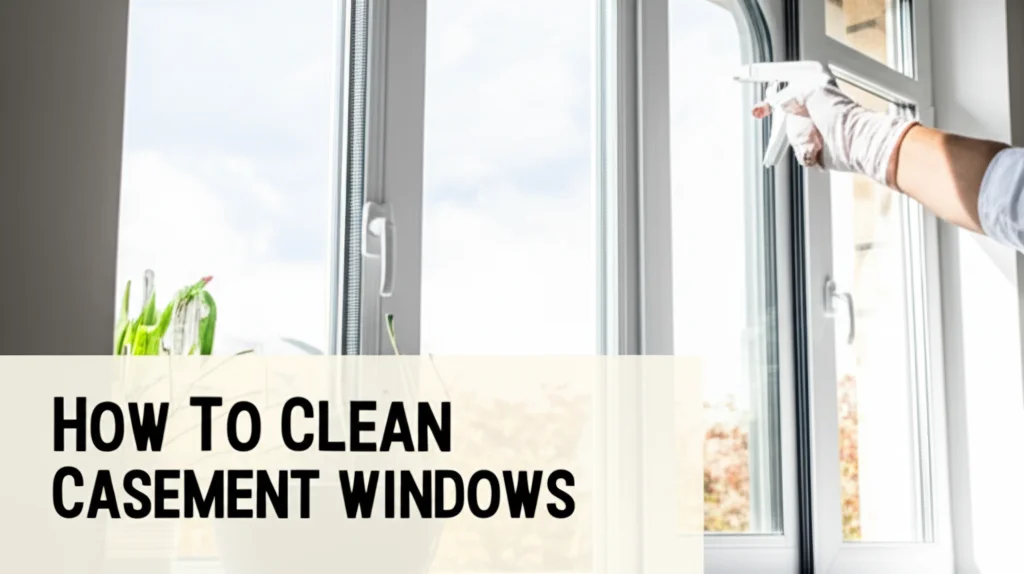· Home Improvement · 6 min read
How To Clean Stucco With Bleach

How To Clean Stucco With Bleach: A Step-by-Step Guide
Is your stucco looking less than its best? Dark stains from algae, mildew, or mold can quickly diminish your home’s curb appeal. Cleaning stucco with bleach is a common and effective method to restore its original appearance. This article will guide you through the process, ensuring you do it safely and efficiently. We’ll cover everything from preparation to rinsing, helping you achieve a beautifully clean exterior. Let’s dive in and learn how to tackle this home maintenance task!
Can you clean stucco with bleach? Yes, you can effectively clean stucco with a bleach solution. However, it’s crucial to dilute the bleach properly and follow safety precautions to protect yourself, your landscaping, and the stucco itself.
Key Takeaways:
- Always dilute bleach with water.
- Protect plants and surrounding areas.
- Wear appropriate safety gear.
- Rinse thoroughly after cleaning.
- Test a small area first.
Understanding Stucco and Why It Needs Cleaning
Stucco is a durable and attractive exterior finish, but its porous nature makes it susceptible to growth of algae, mildew, and mold. These organisms thrive in damp environments, and stucco, especially in shaded areas, provides the perfect breeding ground. Ignoring these growths isn’t just an aesthetic issue; they can actually damage the stucco over time. Regular cleaning is essential to prevent deterioration and maintain your home’s value. Understanding the cause of the staining helps you address the underlying issues, like drainage or excessive moisture.
Gathering Your Supplies for Stucco Cleaning
Before you begin, having all the necessary supplies readily available will make the process smoother and more efficient. Here’s a checklist of what you’ll need to clean stucco with bleach:
- Bleach: Regular household bleach (sodium hypochlorite).
- Water: A source of clean water for mixing and rinsing.
- Garden Sprayer or Pump Sprayer: For applying the bleach solution.
- Stiff-Bristled Brush: A long-handled brush is ideal for reaching higher areas.
- Garden Hose with Nozzle: For rinsing the stucco.
- Safety Glasses: To protect your eyes from splashes.
- Rubber Gloves: To protect your skin from the bleach solution.
- Old Clothes: Bleach can stain clothing.
- Plastic Sheeting or Tarps: To protect plants and landscaping.
- Optional: Wet/Dry Vacuum: For removing loose debris before cleaning.
Preparing the Area Before You Start
Proper preparation is key to a successful and safe stucco cleaning. Start by protecting your landscaping. Cover nearby plants, shrubs, and grass with plastic sheeting or tarps to prevent bleach damage. Next, remove any loose debris from the stucco surface using a brush or a wet/dry vacuum. This will help the bleach solution work more effectively. Finally, ensure the weather forecast is favorable – avoid cleaning on windy or rainy days. Wind can spread the bleach solution, and rain will dilute it, reducing its effectiveness.
Mixing the Bleach Solution Correctly
Diluting bleach properly is crucial. Using too strong a solution can damage the stucco, while too weak a solution won’t be effective. A common and safe ratio is 1 part bleach to 3 parts water (1:3). For example, mix 1 cup of bleach with 3 cups of water. Always add the bleach to the water, never the other way around, as this can cause a dangerous chemical reaction. Mix the solution in a plastic bucket – avoid using metal containers, as bleach can corrode them. Remember to wear your safety glasses and gloves during this step.
Applying the Bleach Solution to the Stucco
Once the solution is mixed, it’s time to apply it to the stucco. Pour the solution into your garden or pump sprayer. Start at the bottom of the wall and work your way up. This prevents streaks and ensures even coverage. Spray the solution onto the stucco, saturating the affected areas. Let the solution sit for 10-15 minutes. Don’t allow the solution to dry on the stucco, as this can cause discoloration. If it starts to dry, lightly mist it with water.
Rinsing the Stucco Thoroughly
After the bleach solution has had time to work, it’s essential to rinse the stucco thoroughly with clean water. Use a garden hose with a nozzle to rinse from the top down, ensuring all traces of bleach are removed. Pay close attention to crevices and areas where the solution may have pooled. Inadequate rinsing can leave behind bleach residue, which can damage the stucco or harm plants. Continue rinsing until the water runs clear.
Dealing with Stubborn Stains and Preventing Future Growth
Sometimes, a single application of bleach solution isn’t enough to remove stubborn stains. In these cases, you may need to repeat the process, allowing the solution to sit for a slightly longer period (up to 20 minutes). However, avoid excessive scrubbing, as this can damage the stucco. To prevent future growth, consider addressing the underlying causes of moisture. Ensure proper drainage around your home, trim back vegetation that blocks sunlight, and consider applying a water-repellent sealant to the stucco. Regular inspections and preventative maintenance will keep your stucco looking its best for years to come. You can also explore alternative cleaning solutions if you’re concerned about bleach, but they may require more effort. For example, you might consider using a pressure washer with a mild detergent, but be careful not to use too much pressure, as this can damage the stucco. If you’re unsure, it’s always best to consult with a professional.
Frequently Asked Questions (FAQs)
Q: Is bleach safe for all types of stucco? A: While bleach is generally effective, it’s best to test a small, inconspicuous area first to ensure it doesn’t discolor or damage the stucco. Some synthetic stucco formulations may be more sensitive to bleach.
Q: Can I use a pressure washer to clean stucco with bleach? A: While you can use a pressure washer, it’s generally not recommended. The high pressure can damage the stucco, especially if it’s older or in poor condition. If you do use a pressure washer, use a very low setting and a wide nozzle.
Q: How often should I clean my stucco? A: The frequency of cleaning depends on your climate and the amount of shade around your home. Generally, cleaning once a year is sufficient, but you may need to clean more often in humid or heavily shaded areas.
Q: What should I do if bleach gets on my plants? A: Immediately rinse the affected plants with plenty of water. The sooner you rinse, the better the chance of minimizing damage.
Q: Is there an alternative to using bleach to clean stucco? A: Yes, there are alternatives. You can use a mixture of water and vinegar, or a commercial stucco cleaner. However, these alternatives may not be as effective as bleach for removing stubborn stains. You can find more information on alternative cleaning methods at https://www.beacleaner.com/how-to-clean-luxury-vinyl-plank-flooring/.
Conclusion
Cleaning stucco with bleach is a relatively straightforward process that can significantly improve your home’s appearance. By following these steps and prioritizing safety, you can effectively remove unsightly stains and protect your stucco for years to come. Remember to always dilute the bleach properly, protect your landscaping, and rinse thoroughly. Regular maintenance, combined with addressing the root causes of moisture, will keep your stucco looking its best. Don’t hesitate to consult a professional if you’re unsure about any part of the process. Now that you know how to clean stucco with bleach, you can confidently tackle this home improvement project and enjoy a beautifully clean exterior!




